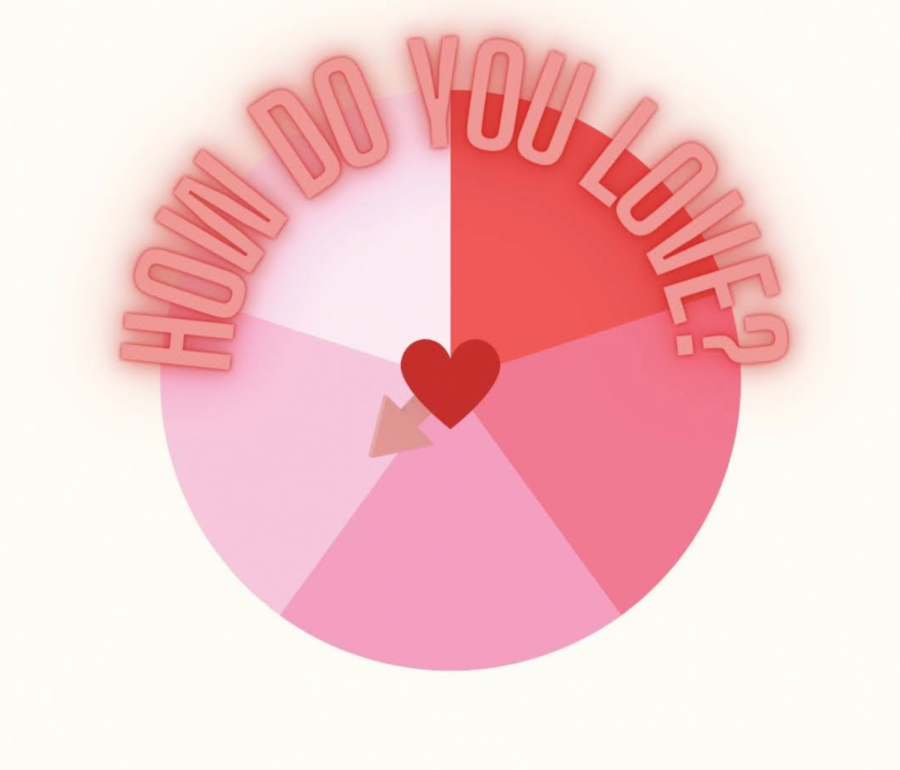Five ways to learn how to love
To best love one’s partner, one must first learn how they need to be loved. Love is given and received in a variety of ways by people with differing personalities. Each person has their own “love language,” and when they research them, they may discover the keys to having a successful love life.
Gary Chapman, the author, counselor and creator behind “The 5 Love Languages” said “one of our deepest emotional needs is to feel loved by the significant people in our lives.” Chapman’s argument is that individuals should adapt themselves to their partner’s love language. However, some people interpret the love languages theory as a personality test. He outlines five methods of conveying love, which he condensed from his marriage counseling and linguistics experience.
To help discover one’s love language, Chapman created the Love Language test. Chapman lists the five following love languages: Words of Affirmation, Acts of Service, Quality Time, Receiving Gifts, and Physical Touch. Each allows partners to understand one another in order to prevent disputes and build deeper love.
Words of Affirmation
This is the love language that flourishes with words of encouragement and appreciation. Communication is typically most important to these people, meaning frequent endearments and reminders that they are loved are appreciated and desired. This can be shown verbally through letters, texts, social media or any other method of expressing emotions. Positive reinforcement in the form of praise that sheds light on something they achieved or who they are brings fulfillment to those who gravitate toward words of affirmation.
Kiana White, business management junior, said that her love language is words of affirmation.
“Words mean a lot to me. The heart of words can do so much, and I believe words can uplift and they can degrad.” White says, “So when I hear from someone and they are uplifting me like that, of course I am going to feel uplifted.”
Acts of Service
Acts of service is the embodiment of the phrase “actions speak louder than words.” Actions can include anything done to help make another’s day easier. Those with this love language prefer to be shown that they are loved, rather than being told. It is important to remember that an act of service entails more than making a big show; it’s about achieving a feeling of trust, where they know they can rely on their partner to look out for them in both little and large situations.
Quality Time
The love language of quality time is shown by spending meaningful time with one’s partner. Those who prefer quality time appreciate when their partner gives them uninterrupted time, including deep conversations and having undivided attention. Examples of this between partners can be seen in movie nights, cooking a meal together or completing a challenging puzzle.
This is industrial and organizational psychology graduate student Tirtha Anaweaker’s preferred love language. “My love language make(s) me feel special, appreciated, respected, and cherished. I feel most loved when my close ones spend quality time with me and engage in deep conversations.”
She says, “I find deep conversations to be mentally stimulating and a way to deepen my bond.”
Receiving Gifts
Those who have gifts as their love language prefer to express love through giving and receiving anything from modest mementos to grand gestures. Though it is true that this love language is about the receipt of gifts, it is not about the monetary value of the gift, but about the symbolic meaning behind it. They understand and appreciate the gift-giving process, as it includes the careful consideration, the purposeful selection of an object to represent a connection and the emotional implications of receiving the gift.
Physical Touch
The love language of physical touch is where someone typically enjoys giving and receiving physical displays of affection. This is a very corporeal sort of relationship that communicates love through cuddles, hand-holding and other gestures. Skin-to-skin contact is scientifically proven to be as significant as “feel good chemicals” such as serotonin, dopamine and oxytocin, which are naturally produced during this process.
Junior national security major Sophie Martinez says her love language is physical touch. She says that she feels most content and cared for because she believes physical touch is the most intimate.
“What I love most about my love language is how much it can communicate,” says Martinez. “I love giving people hugs and it is the easiest way that I can share how much they mean to me. If the people closest to me are sad, I can offer that physical affection. If they’re excited, hugs work there, too! It has been something that has allowed me to make very strong bonds with others and I love that physical touch is so human, so innate for many people.”
It is important to remember that everyone loves and receives love in different ways. It can improve your knowledge of each other, prevent disputes, and build deeper love, according to Chapman’s work.

Elisa D’Egidio is a senior studying criminal justice with a concentration in crime analysis and a minor in English. Elisa has been an active staff writer...




